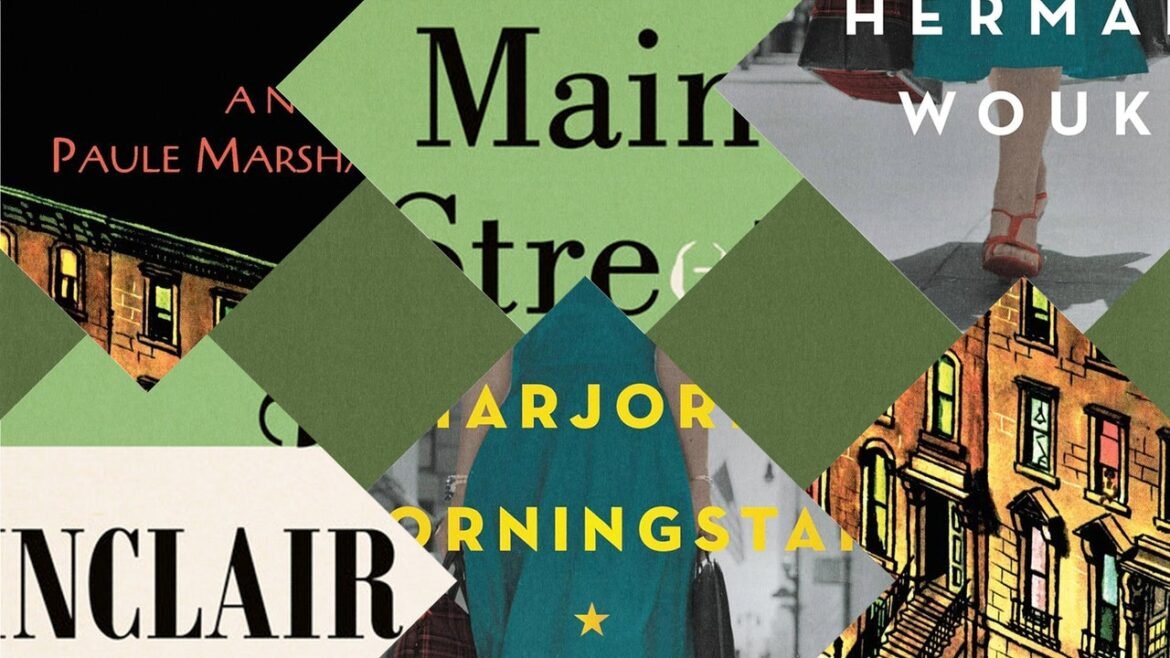In “Free Food for Millionaires,” Min Jin Lee’s best-selling début novel, the protagonist, Casey Han, is the ambitious daughter of Korean immigrants, who struggles to balance her aspiration with the pressures of tradition as she rises through the world of finance in nineteen-nineties New York City. Not long ago, Lee sent us some notes, which have been edited, about four other books that explore the lives of twentieth-century women weathering the consequences of the choice their families made to move from one place to another—books that are simultaneously intimate character studies and examinations of wider social transformations.
Main Street
by Sinclair Lewis
Sinclair Lewis observed his fellow white Midwesterners with terrifying precision. This book, a social novel from 1920 with cutting satirical elements, features a woman named Carol. Carol is the daughter of a judge; she studies sociology in college, and then gets an advanced degree in library science. As a young librarian in St. Paul, Minnesota, she meets her future husband and agrees to follow him to his small home town. Like Dorothea Brooke of “Middlemarch,” Carol is a cosseted young woman who wants to change her world and be useful, yet is restricted by the patriarchal society she lives in. Lewis documents the life of this educated and liberal white American woman and her anxieties about marriage, small towns, and social reform, with great sympathy and wisdom.
Growing up in Queens, an early twentieth-century novel about small-town Minnesota was exotic for me. “Main Street” is very much a chronicle of its era, but it also feels very prescient. Lewis dramatizes evergreen American concerns: fearmongering against foreigners, worries of socialism, rejection of fair labor practices, as well as familiar, collective anxieties about change and social progress.
Marjorie Morningstar
by Herman Wouk
This is an epic story of a Jewish American woman born and raised in New York City. Drawn in the style of a nineteenth-century British marriage-plot novel, it was published in 1955, and follows a character, Marjorie Morgenstern, who is born in 1916. Marjorie is the exceptionally beautiful daughter of a successful businessman. Her mother relocates the family from the Bronx to Manhattan in the hopes that her daughter will marry well. Marjorie grows up to be a bright heroine—she is brainy and alluring, never a lovely puppet or simpering dutiful daughter.
Over the course of the five-part novel, she falls in love, interrogates her Jewish faith, and thinks critically about the person with whom she will spend her days. What I most admire about the book is Marjorie’s active engagement with her own life. Marjorie tries difficult things, goes on trips, makes love, tells the truth, and takes her lumps. When I first read the book, in my late twenties, I found Marjorie’s ending shocking. Decades later, when I returned to it, I saw the intelligence, compassion, and truth in Wouk’s depiction of her.
Brown Girl, Brownstones
by Paule Marshall
This is the début novel of Paule Marshall, which features a Barbadian-immigrant family in Brooklyn. Selina Boyce, the central character, is the younger daughter of a proud father and a striving mother. The family lives in a rented brownstone in Brooklyn, in which rooms are let to subtenants. The inciting incident occurs when Selina’s father—a ne’er-do-well dreamy charmer—inherits a valuable piece of property in Barbados from his sister, and his wife directs him to sell it so that they can purchase a house in Brooklyn. The book is at once a vigorous coming-of-age story and a depiction of how West Indian immigrants, African American descendants of enslaved Africans, and Jews view one another—often confusedly—in the new country.
For me, there is a literary conversation between Marshall’s novel, which came out in 1959, and V. S. Naipaul’s “A House for Mr. Biswas,” from 1961. Both books center on an outsider’s wish to own a piece of property, and use that wish to explore ideas about shelter, status, protection, meaning, and arrival. What distinguishes Marshall’s novel is the story being told from the point of view of the child immigrant, who never asked for the first generation’s quest.
Clay Walls
by Kim Ronyoung
This is an absorbing historical novel about Koreans and first-generation Korean Americans in Los Angeles, written by the Korean American Gloria Hahn (under a pen name), who died of breast cancer in 1987, shortly after it was published. Set in the first half of the twentieth century, the novel—which was Hahn’s début—focusses on Haesu, an educated woman from a noble background who marries a man from the farming class. They leave Korea during the colonial era and settle in Southern California, where Haesu undergoes a transformation from a proud young woman who values her class status to a mother who struggles to provide for her children in an unfamiliar country.
Like “Brown Girl, Brownstones,” this novel also involves a land sale and questions how racial minorities in poor communities relate to one another—often replicating the prejudices of the majority.



